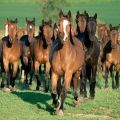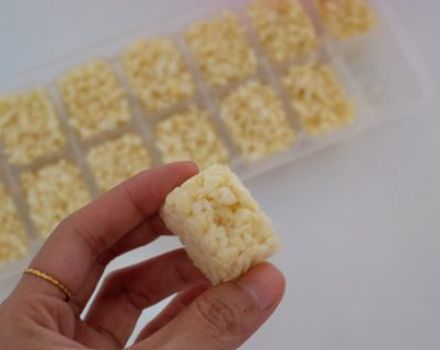Instruction for the vaccine against rhinopneumonia in horses and its composition
Rhinopneumonia is considered a dangerous disease. Pathology of this type provokes serious complications, including a sharp weakening of immunity and loss of the ability to bear offspring. The basis for the prevention of the development of rhinopneumonia in horses is a vaccine, the instructions for use of which contain the rules for use and storage, as well as possible complications arising after the administration of the drug.
Release form and composition of the vaccine against rhinopneumonia
The vaccine against rhinopneumonia is available in the form of a dry, porous mass of pale yellow color, packed in a transparent container. The basis of this remedy is an avirulent strain of the virus that causes this disease. The pathogen was previously reproduced in a cell culture taken from a piglet and subjected to freeze drying.
This type of vaccine is used to prevent the spread of rhinopneumonia in horse breeding farms. The tool is mainly used on dysfunctional farms with a high risk of spreading the virus.
In addition to the cultivated pathogen, edible gelatin is included in the vaccine. The original mass is not introduced into the animal's body. Before vaccination, the agent is pre-diluted in 0.9% isotonic sodium chloride solution or distilled water. The original mass should completely dissolve, leaving no residue or flakes.
Principle of operation
The principle of the vaccine is based on the ability of the animal's body to repel the attack of viruses. A weakened pathogen is included in this agent. After injecting the latter into the horse's body, the animal's immune system begins to produce antibodies that fight the virus. Thanks to this, a stable immunity to the effects of a specific pathogen is developed.
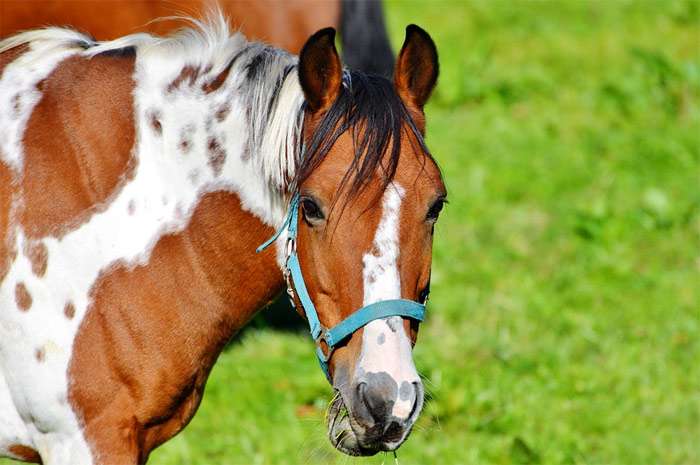
The effectiveness of vaccination depends on how closely the rules of the procedure are followed. Immunity to rhinopneumonia in animals is developed after 10-14 days. However, a single procedure has a temporary effect. That is, to develop stable immunity to rhinopneumonia, the horse will need to be revaccinated.
Despite the fact that a strain of the virus is introduced into the animal's body, the resulting meat or milk of mares can be eaten after 10 days. Such products are not dangerous to humans.
Advantages and disadvantages
The benefits of vaccinating horses are due to the fact that this procedure:
- reduces the risk of developing rhinopneumonia;
- reduces the likelihood of complications, including the need for induced abortion;
- prevents the development of an epidemic among horses within the same farm;
- minimizes the risk of developing paralysis and paresis;
- allows you not to restrict animals in movement.
It should be understood, however, that a vaccine is not a drug that cures a horse from rhinopneumonia. If the disease develops, other means will be required. The vaccine is used only to prevent the onset of rhinopneumonia. Moreover, this tool does not exclude the possibility of developing the disease in animals.
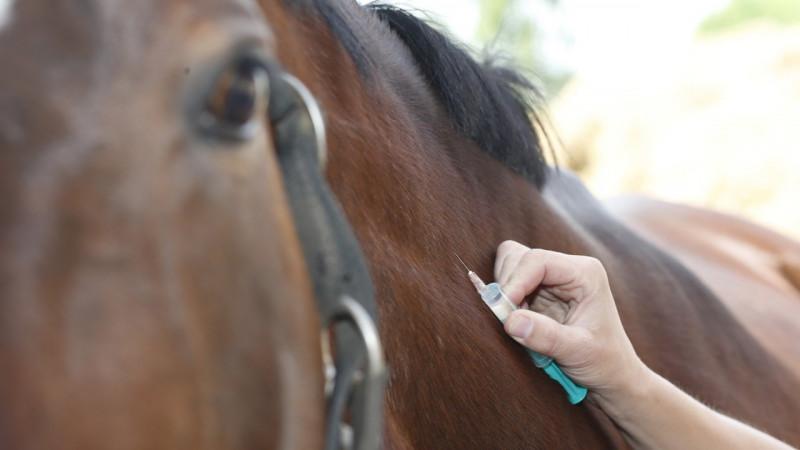
The second pronounced disadvantage of the vaccine is that complications are possible after administration. This is due to the reaction of the body to the ingested pathogen. In such cases, a temporary increase in temperature and other symptoms characteristic of rhinopneumonia are not excluded.
Indications for use
Indications for the use of the vaccine against rhinopneumonia are:
- inappropriate conditions of detention;
- small age;
- purebred.
Rhinopneumonia develops in horses of all types and ages. However, the younger the animal, the higher the likelihood of contracting a viral disease. More often this pathology is diagnosed in young animals up to a year. Also, the disease is typical for purebred horse breeds. Rhinopneumonia does not develop in cattle, small ruminants, humans, and pigs.
Horses that are not properly fed will need vaccination against this disease. Insufficient immunity and closely related breeding contribute to the development of pathology. In addition, the misuse of the animal in some cases provokes the spread of the virus among the livestock.

Vaccine instructions
Before administration, the vaccine must be diluted in distilled water or sterile saline solution, heated to a temperature of 18-25 degrees. Carrying out this procedure, it is necessary to follow the rules of antiseptics: perform manipulations with gloves. You should also boil syringes and needles, and treat the injection site with alcohol or iodine.
The rhinopneumoniae vaccine is injected intramuscularly into the neck. Each time, you can use no more than 2 milliliters of the drug. The frequency of vaccine administration depends on the type of animal. For pregnant mares, this procedure is carried out:
- 1-3 months of pregnancy;
- 3-4 months after the first vaccination (no later than 7 months of pregnancy).
Adult horses are also vaccinated twice with a frequency of 3-4 months. In relation to young animals, a different tactic is used to prevent rhinopneumonia. Stallions up to a year are first vaccinated at the age of 3 months, again - 3-4 weeks before the end of breastfeeding.
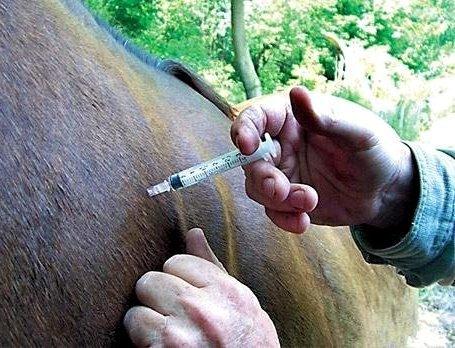
Annual revaccination is considered an important condition for the success of rhinopneumonia prevention. Each subsequent procedure is carried out according to the given algorithm. If the horse is used in sports competitions, then vaccination / revaccination is carried out no later than 2 weeks before leaving the farm.
After each procedure, the animal must be supervised for a week.
Are there any side effects and contraindications?
Due to the fact that the animal's body reacts to the injected vaccine, after 2-3 days the temperature may rise to 39.5 degrees. This reaction is not considered dangerous. Body temperature is usually restored without outside intervention.
Vaccination / revaccination is prohibited if the horse has respiratory diseases. Also, the procedure is contraindicated in animals with elevated body temperature.
Storage conditions
The vaccine remains effective if the storage conditions of the drug are observed. The latter must be kept in a tightly closed container. The drug should be stored indoors away from direct sunlight at a temperature of 6-8 degrees.If these conditions are met, then the shelf life of the vaccine is 12 months. Unused drugs must be disposed of. Expired vaccines should not be administered to animals.








